The subtleties of building a gazebo in the country with your own hands
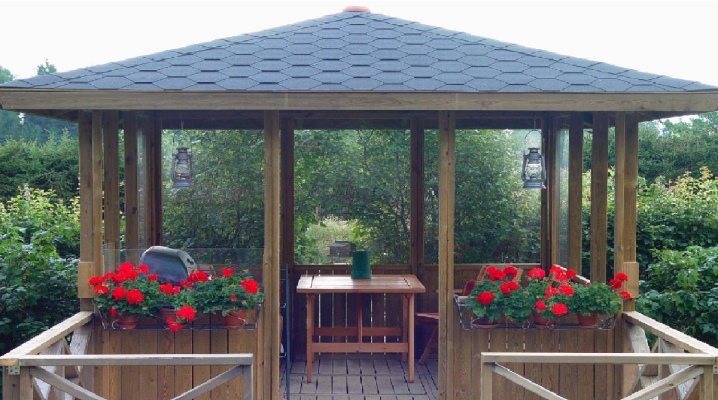
The gazebo at the summer cottage belongs to the functional and at the same time decorative elements. It protects from the sun, wind and precipitation and is a recreation area. It will not be difficult to build such an architectural element in the garden.
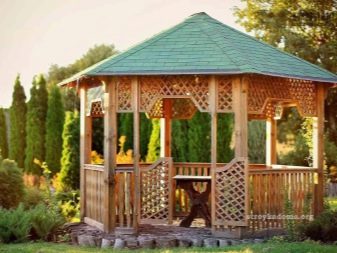
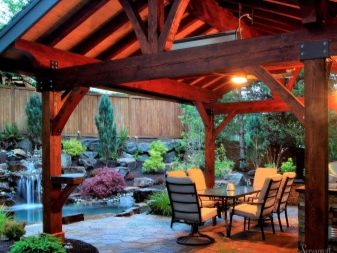
Peculiarities
A gazebo in the country can perform different functions, and most often two or three of them are combined in one version. The features of its operation are determined by several key points.
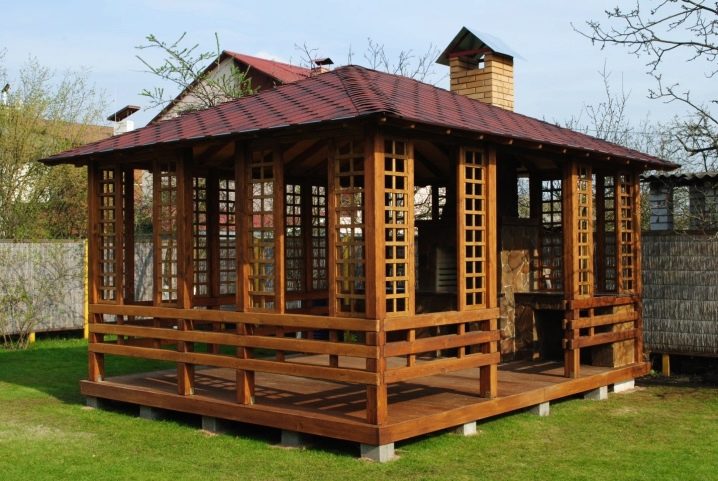
First of all, this is the purpose of the gazebo:
- Shade-giving structure. Structurally, they are the simplest, and are usually needed in those areas where there are no tall trees and bushes and which are not protected from the scorching sun. Shade gazebos are used for resting from work in the beds and as a place for organizing barbecues in good weather.
- Summer kitchens. Such options are already more difficult. Their design provides for protection from adverse weather conditions, and inside there is a dining group and a barbecue. The place of the hearth is often occupied by a fireplace with an oven, suitable for preparing various dishes in nature.
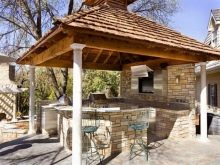

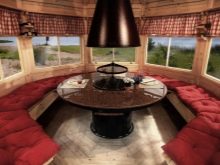
- Multifunctional gazebos. They combine the advantages of a kitchen area and a seating area. They are usually protected from all weather troubles and can be used at different times of the year.
- Playgrounds. Spacious gazebos that do not provide for the presence of a barbecue or fireplace inside. They equip many seating places, which makes it possible to use the gazebo for bardic gatherings, and for teas with a portable table, and for children's games.
- Decorative pavilions. They complement or correct the landscape design. In some cases, they play the role of an object, pulling attention away from the problematic layout of the site.
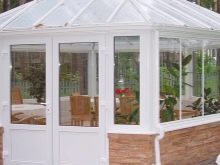
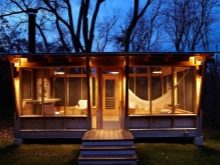
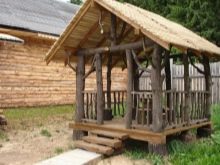
The second important aspect is to choose the location of the gazebo on the site plan.

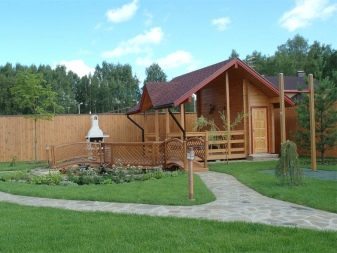
This must be done before starting construction. The gazebo will look great between the peony and apple bushes, but it can obscure the light-loving plants in the beds or cast a shadow over the neighboring area.
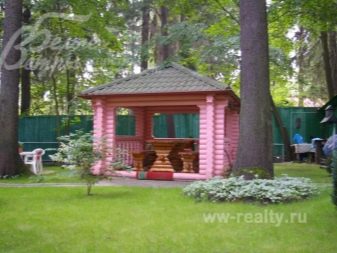

When choosing a place for a gazebo, you must be guided by the following principles:
- The gazebo fits organically into the landscape design of the site. Its location was chosen taking into account the relief of the land, area and shape of the site.
- It does not shade plants that require a lot of light.
- It does not violate the correct zoning of the territory. The recreation area accounts for no more than 15-20% of the entire territory.
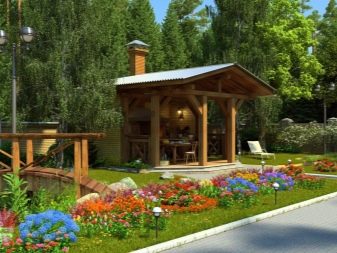
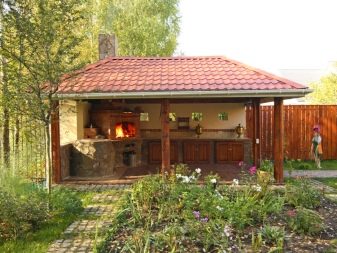
- Building codes have been complied with. This means that the building is at least 3 meters away from the neighboring site, the slope of its roof is facing the inside of the site, and not on the side of the neighbors, the location relative to communications at the dacha is observed. The water and electricity supply must be safe. The organization of a barbecue or fireplace inside requires compliance with certain rules: the use of heat-resistant materials, a properly organized chimney, the presence of a protective "apron" around the fireplace.
- The sanitary and hygienic standards were observed: the gazebo is 6-7 meters away from the outbuildings, 8-10 meters from the cattle-breeding ones, and 13 or more from the cesspool.
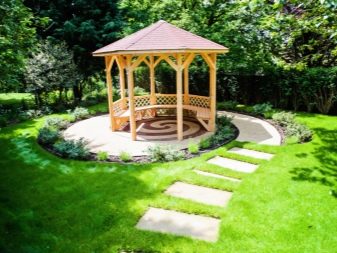
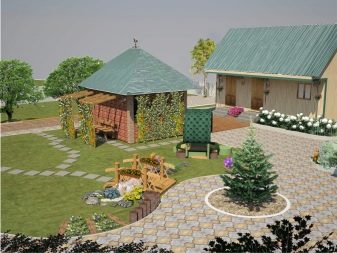
In some cases, a portable gazebo will be optimal.
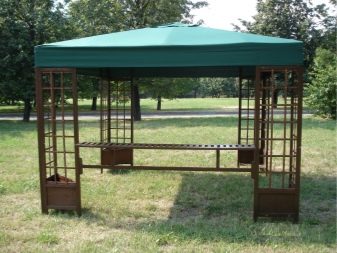
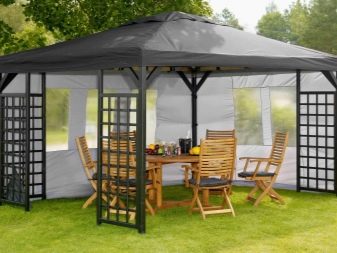
Projects
Designing is a difficult and crucial stage in creating a gazebo.
The plan is created taking into account many aspects.
- The purpose of the construction of the building. This will determine its design features and materials of manufacture.
- The dimensions of the gazebo. First of all, its possible overall dimensions are correlated with the area of the site. Then the base area and the height of the gazebo are calculated based on the fact that for comfortable placement inside, one person should have at least 2 m in height and 200-220 cm in width.
- Land area. The optimal parameters for a recreation area are one-fifth or one-sixth of the total land area. Moreover, the more compact the site, the smaller the size of the building should be. The design of a gazebo in a small area should also not be made too complicated.
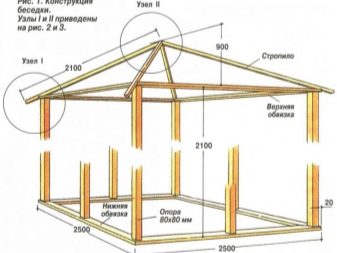
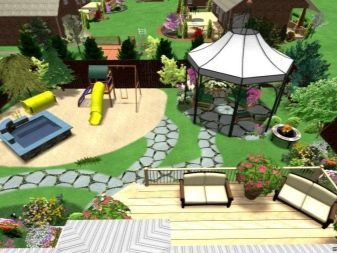
- Its shape. When zoning a rectangular area, the gazebo can be allocated any convenient place. Narrow and elongated gardens require careful placement of additional buildings and their masking with green spaces. On the "triangle" of the recreation area, the background is traditionally assigned, invisible to prying eyes. The L-shaped form implies the device of a gazebo in the garden on a free-standing additional site (top of the letter G).
- Relief and features of the soil. For the gazebo, the most unfavorable segment in terms of fertility on the site is allocated. The stronger the base under the building, the less likely it is that the structure can penetrate or slope. Clayy lands with a large number of stones are much more suitable for arranging the base of the gazebo than loose fatty chernozem. If possible, you need to choose a dry place so that the wooden structures last longer.
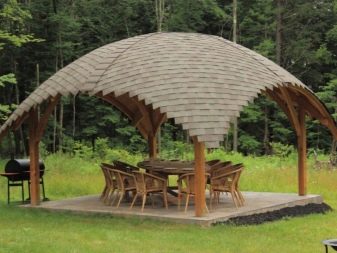
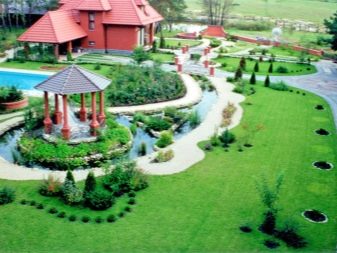
- Location on the cardinal points. It is not pleasant when the sun beats down the whole day in the gazebo or it is blown by a cool north wind every now and then. The gazebo should be placed towards the light with its back wall or sideways, and a barrier should be organized on the windy side. The barrier is not necessarily a solid wall. A hedge, plastic, glass, textiles, curtains and other decorative elements will be well protected from the wind.

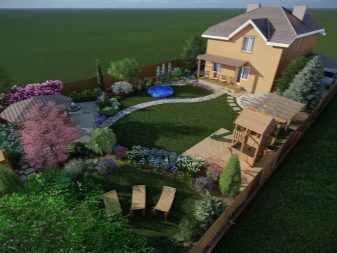
- Placing a new object taking into account the existing buildings on its own and neighboring land. The plan diagram should take into account how the gazebo relates to the rest of the objects on the site, how suburban communications will be laid between them, where roof sheds and other details are located. It is necessary to take into account the direction of the canopies of the roof of the country house so that the water does not drain from it onto the gazebo. The slope of the roof of the gazebo should not look at the neighboring area if the distance between them is less than 3 meters.
- Accounting for landscape design. It is difficult to determine from one sketch whether the option turned out to be optimal, therefore it is better to compare the drawings in two or three versions with the subsequent embodiment of the volumetric model.
- Compatibility principle with a country house in style, design, colors and materials used.
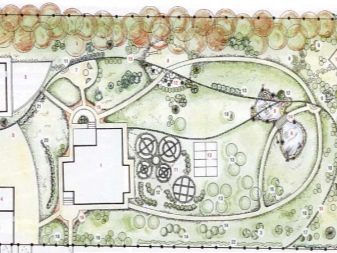
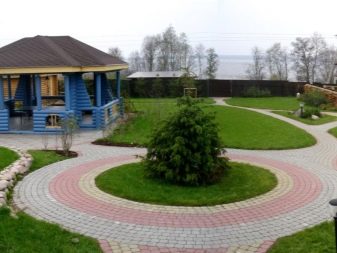
Types of structures
Any gazebo consists of the same elements: base, supports or legs, side walls (sometimes only railings or partitions) and a roof.
Each of these elements is diverse in shape and type of construction, and which of the options to combine with each other depends on the desired building functions and design ideas.
There are only two types of gazebo bases - with and without a foundation. Serious preparation of the site for the gazebo is not required if the structure is portable or prefabricated. In the cold season and in bad weather, you can simply remove it.
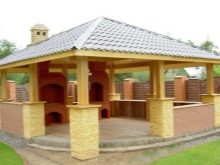
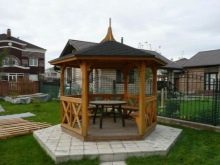
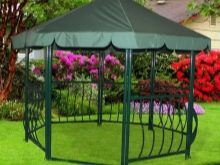
The foundation is necessary when the gazebo is being built for many years, and you do not need to remove it from the place.
There are several types of bases for such structures.
- Solid. Such a foundation is also called a monolithic slab. It is suitable for structures of varying complexity from different materials, mostly lightweight. There must be a ventilation gap between the foundation and the floor.
The slab base consists of several layers, it is used on unstable ground. The lowest layer is covered with sand, then covered with waterproofing materials, and the top is filled with cement or concrete mortar.Since the load on it is significant, the foundation is reinforced with a metal mesh. This is a reliable and durable base.
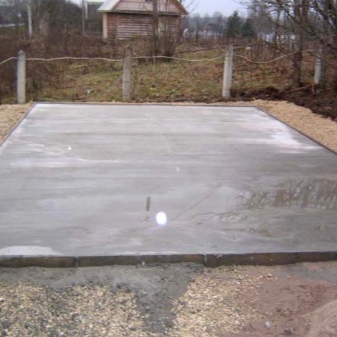
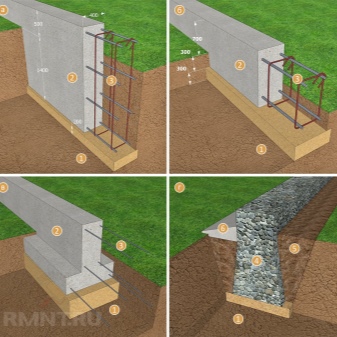
- Tape. Designed for more complex and heavy buildings. Its design implies the presence of ready-made blocks of cement-concrete mixture around the perimeter of the foundation. They are laid out inside a small depression in the ground, sprinkled with sand and covered with waterproofing, and then filled with mortar and reinforced. The advantage of this method is that you do not need to fill the perimeter inside the blocks under an ordinary wooden arbor. They are strong on their own.
- Columnar. The principle of operation is the same as that of the tape one, only the blocks do not form a continuous perimeter, and the space between them is filled with a solution. The pillars make it possible to fill the foundation for arbors of non-trivial and complex shapes, but the materials should be relatively light, like hollow metal, plastic, wood.
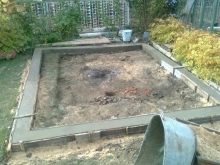
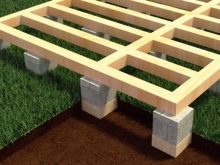
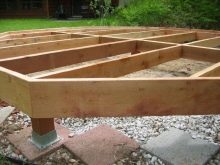
- On a bar. A solid or striped wooden base is intended exclusively for structures of the same material. At the corners under the timber there should be columnar supports, dug into the ground, made of brick or concrete.
- On piles. This option is relevant when the gazebo needs to be raised above the ground for good ventilation. Piles are also convenient for use in areas with uneven terrain. Such metal structures are installed simply: they are "screwed" into the ground and into the frame of the gazebo around the perimeter.
- From improvised means. The use of sturdy pallets or car tires is important. The latter are filled with rubble inside for stability.
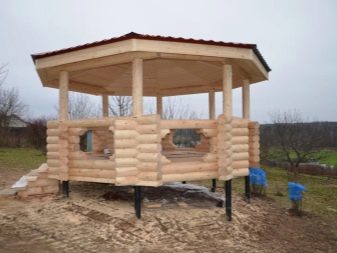
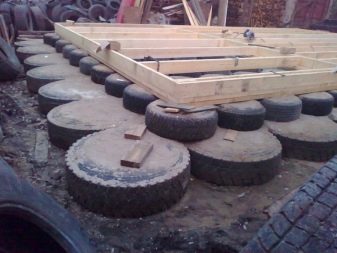
As for the roof, often a flat or pitched roof is used for the gazebo, the slope of which is directed in the direction opposite to the entrance. Another option, no less common, is a gable roof. The left and right slopes can be arranged symmetrically or asymmetrically.
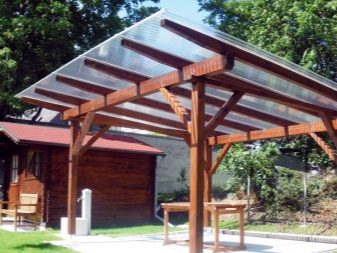
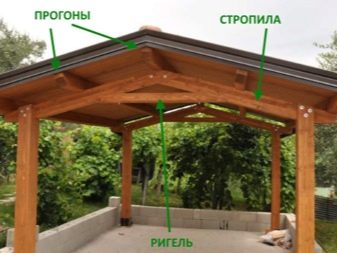
Square-shaped gazebos are characterized by a hipped roof with a ridge knot (has from 4 slopes, converging at one point at the top). In rectangular arbors, a hip type of roof is used (two long sides are in the shape of a trapezoid, and two end sides are triangular). The semicircular roof is made of transparent plastic sheet (in appearance it resembles a greenhouse).
Round base gazebos are often made with tapered and domed roofs. Roofs covered with soft material (like soft tiles) have a complex figured shape.
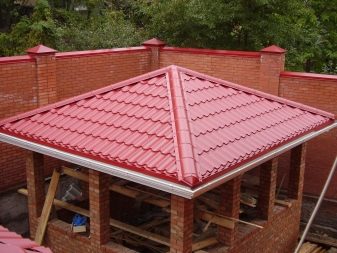

An extremely rarely used type of roof in the Russian climate is a pergola. This is a roof that is not covered with sheet material on top. It looks like a wooden lattice, which is covered with fabric or PVC materials. The fabric should hang slightly downward.
Pergola gazebos look very nice, provide shade, but are only suitable for dry days. In addition, the fabric will have to be washed often, because it is not customary to use a dark color for them.

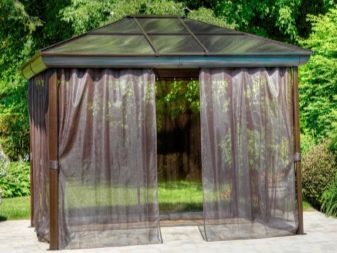
This option is relevant for prefabricated gazebos in the country and outdoor events, for example, outdoor weddings.

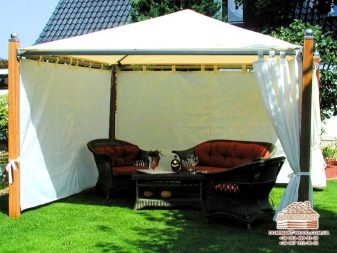
The design of the gazebo itself can be square, rectangular, polygonal or round.
The simplest option is open, when, in addition to the base, roof and supporting elements, it is no longer complicated by anything. This is a summer cottage option used in warm summer. Such a gazebo is blown by all the winds, and in rainy weather, water gets inside.
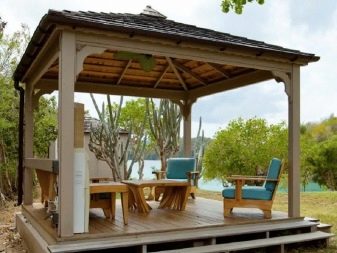
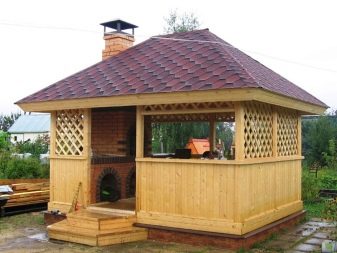
The second type is semi-closed gazebos. These are gazebos or pavilions. As a rule, they have an overhanging roof that protects the upper part, and sides up to half the height of the structure (100-150 cm). Arbors with lattice walls are also semi-closed. They are used in the warm season during the summer season.
The closed gazebo is more like a small non-insulated country house. It is often glazed.
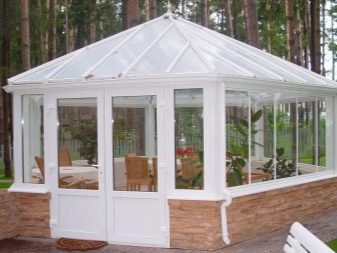
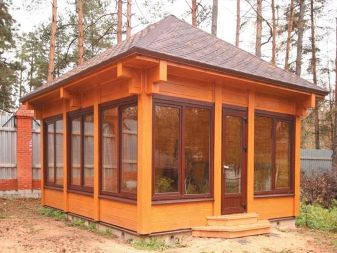
A combined gazebo usually combines a closed space and an open part under the roof, like a light veranda.
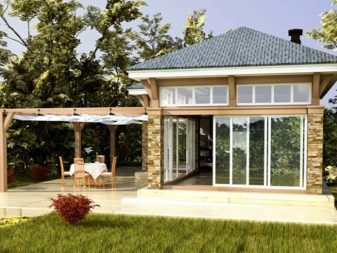

Materials (edit)
The technical characteristics of the materials affect the quality of operation and the service life of the gazebo. For example, a wooden building without a foundation will be less durable than a steel one. But it is a priori warmer than a gazebo made of metal, brick or other materials.
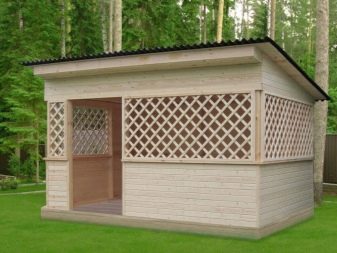
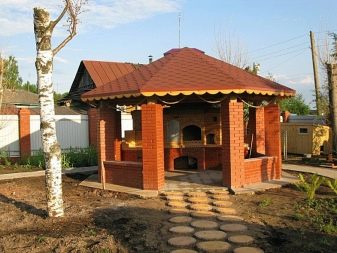
Let's start with the foundation.
A variety of materials may be needed to create it:
- Sand. Quarry or river dried sand is used for fragile and wet types of soil to strengthen the base of the foundation and prevent corrosion of the metal base and rotting of the wooden one. The sand layer itself is, of course, not the foundation. He is only an auxiliary element.
- Waterproofing materials. They are needed to protect the foundation from cracking, since it is often located above the freezing depth, and condensation from groundwater rises up to 4 meters in height. Roll materials (PVC film, impregnated bitumen paper) are popular for waterproofing. They are lined directly on the sand and held together with mastic.
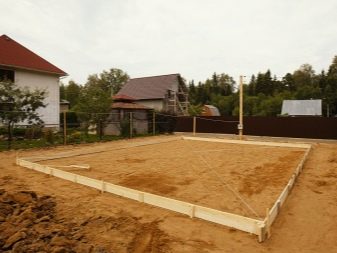
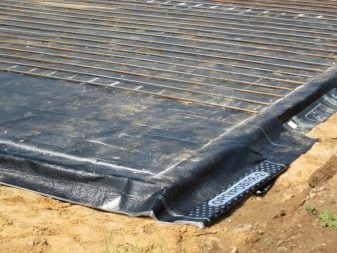
Another option is coating materials. They have a liquid consistency, they are applied directly to the foundation with a brush or roller, like paint.
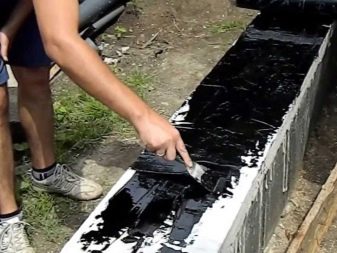

- Stone. It is laid out in mosaics on the bottom of a small depression for pouring a monolithic foundation, and from above it is poured with a cement mortar.
- Cement. Cement-sand mortar can be used to fill the foundation for a structure of relatively low weight. It is important to pour it over stone slabs that reinforce the foundation structure instead of a reinforcing mesh. When choosing cement, it is better to give preference to a brand not lower than M300, as well as pay attention to its hydrophobic properties, resistance to freezing and temperature drops, and a tendency to shrinkage.
- Concrete. Blocks for the "stone" belt are poured from concrete on their own. They form the so-called strip foundation. If the gazebo weighs a little, then the blocks around the perimeter will be enough. If the structure is heavy, the perimeter is filled with a mortar of cement, sand, gravel and plasticizers. Also, concrete and cement mortars are used for a columnar foundation.

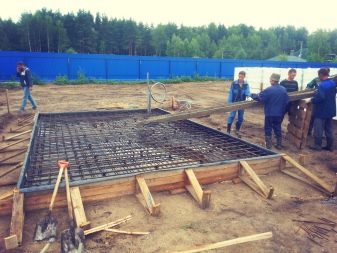
- Reinforcing mesh. This is a hot-rolled steel net, which serves as a support frame for a concrete or cement layer of pouring. With it, the foundation is guaranteed not to fall apart under the weight of the gazebo, even if it is brick or forged or there is a fireplace inside;
- Brick. High-quality brick serves as a support in the construction of a columnar foundation. It can be used both on its own and over concrete pouring. The brick should be red, not white, free from defects (not burnt, not cracked), from non-porous materials. For these characteristics, for example, ceramic is suitable.
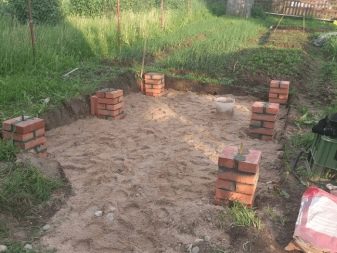
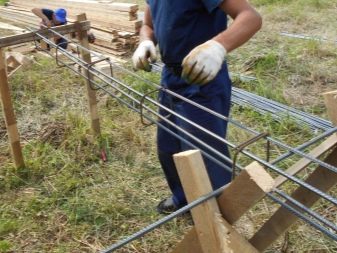
- Steel reinforcement cage for the manufacture of a foundation on piles. Such a frame can be ordered by professionals, and installed on site by yourself.
- Wooden beams to form a frame on wooden piles.
- Materials at hand: crushed stone, tires, pallets, nails, staples, and other devices.
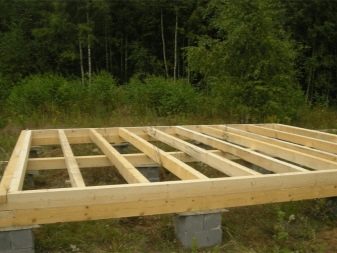
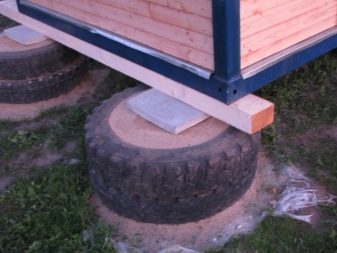
Then you need to choose materials for the frame of the gazebo. The most popular material is, of course, wood. Even beginners can build from it, it is very difficult to spoil a tree, and among the garden greenery it looks as natural and harmonious as possible.

For the construction of arbors, wood and its derivatives are used in a different format:
- Solid timber. The frame of the gazebo is made of it, sometimes the walls, but not in a completely closed building. It is too thick for this, and it also shrinks.
- Glue bar. Its main difference from ordinary timber is that it does not shrink. A large gazebo (open, semi-closed and closed) can be built entirely from it.
- Sliced timber. Such material is thinner than square-cut timber, and may well be used for building the frame and finishing the gazebo. Fragments are fitted to each other like lamellas of a lining.
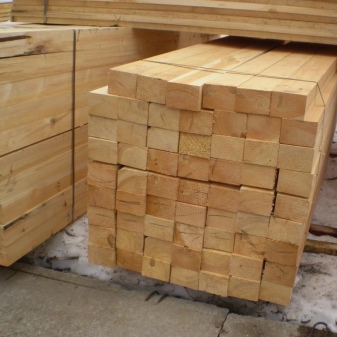
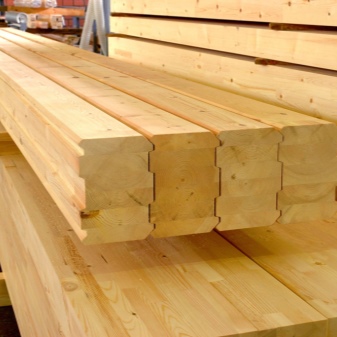
- Lining. She is filled with the gaps between the base of the timber to make a semi-open or closed gazebo.
- Chopped logs. A gazebo in the Russian style with solid thick walls is assembled from such material as a constructor.
- Rounded logs. Option for the construction of a reliable, warm, semi-closed or closed gazebo. In fact, it turns out an uninsulated house.
- Edged and unedged boards. They can be used both to create the frame and to fill the gaps between the frame beam. Good sanded edged boards can be used to build a pergola gazebo with a lattice roof.
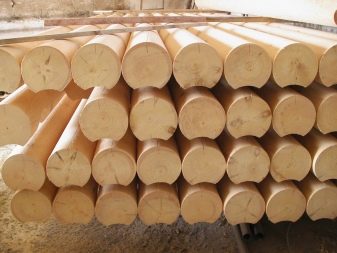
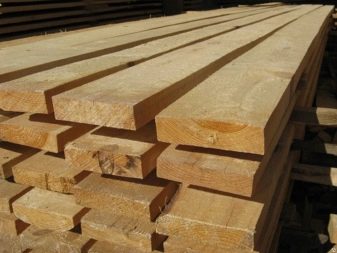
- Plywood. Its role is to fill the voids between the elements of the arbor frame. The plywood itself is too thin to be assembled entirely from the gazebo.
- Fiberboard. It is used similarly to the previous material, however, for fiberboard there is an important condition - placement only in dry and warm climates.
- Chipboard and chipboard. A budget alternative to plywood and planks. Suitable for use in dry climates for the construction of partitions between two parts of the building in a closed gazebo, for making furniture in the gazebo with your own hands.
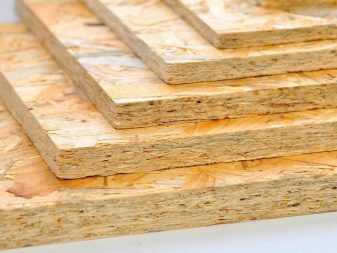
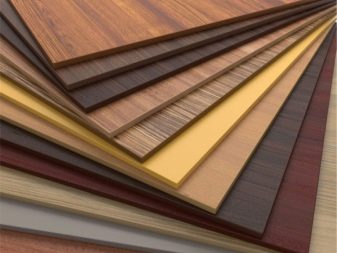
The advantages of wood are in its naturalness and aesthetic qualities. In addition, it is easy to process, convenient for beginners and non-professionals.
Lack of wood as a building material in its high cost. If we are talking about glued beams, logs or a polished board, then the construction of a gazebo will cost a decent amount. Also, the tree limits the choice of the basis for the foundation and requires processing with protective compounds.
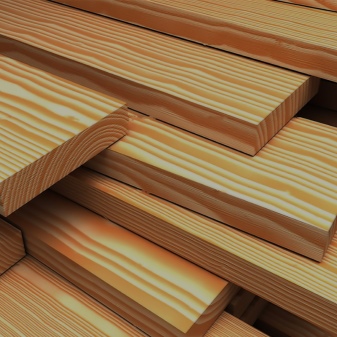

An alternative option is metal structures. They are less popular for two reasons: metal is more difficult to work with and it does not fit well into the natural landscape. And the weight of such a structure will require thorough preparation of the foundation, and inside the building will be cold, since closed metal arbors are not made.
The advantages of metal arbors are their durability. You can order the structure ready-made, and if you do not want to mess with the foundation, install it directly on the ground. But such a gazebo will only be designed for warm and dry seasons.

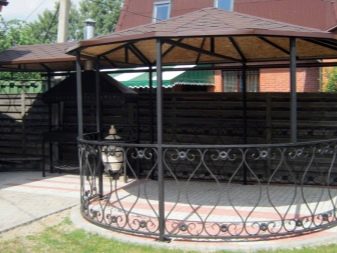
Disadvantages: the metal heats up strongly in the sun, so it is impossible to make the structure closed or semi-closed, and the material for the roof must be selected very carefully so that it is not stuffy and hot in the gazebo. Also, metal lends itself to corrosion and requires no less care than wood.
There is a brick in the same row with the metal. It is chosen by those who want to have a solid and solid gazebo on the site.
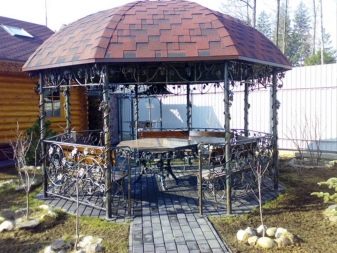
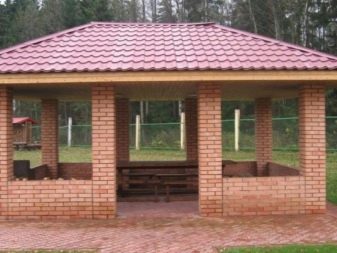
Advantages of brick: strength, long service life, the ability to build from it not only a gazebo, but also a fireplace inside, with a closed version of a brick gazebo, it can serve as a guest house and be used at any time of the year.
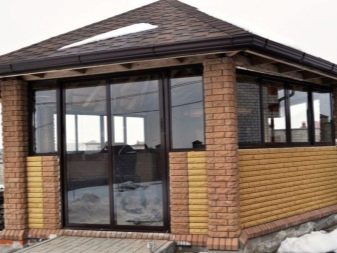
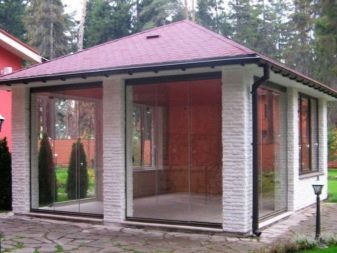
Disadvantages: brick and related materials will be very expensive, the work on its construction is time consuming and requires some building skills. It is necessary to build a full-fledged foundation, and to use the gazebo in winter, insulate the walls.
Combining some of them helps to save on materials. It looks interesting, and it takes less time than painstaking work with one brick, and the cost of the gazebo is immediately reduced.

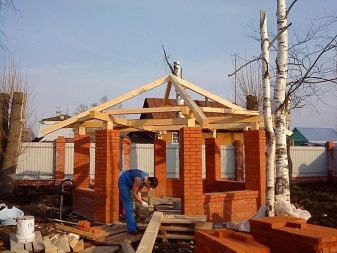
Often, jack of all trades erect polycarbonate pavilions on their garden plots. This material is flexible and pliable in work, it can be used to make both walls and roofs of various shapes. It perfectly protects against moisture and wind, does not freeze and does not crack in the cold season, transmits light, painted in the color of polycarbonate, does not fade, is easy to clean and does not require special care. In winter, it will be cold in such a gazebo, but for autumn, spring and summer this is the best option. The cost of polycarbonate in the form of sheets is cheaper than any other material per square meter of construction.
Especially economical and original owners build gazebos from scrap materials. They can be plastic or glass bottles (they keep heat well due to the air chambers inside), tree trunks, pallets and fruit boxes.

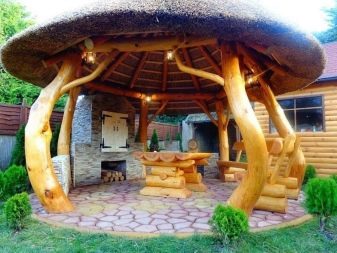
The final element is the roof. Such materials are used for its construction.
- Polycarbonate (pitched and semicircular roofs).
- Professional list (gable, hip, multi-pitched roofs). It is a versatile material for a gazebo with a high ceiling (heats up in the sun). It has two drawbacks: it can leak at the joints, it makes a lot of noise when it rains.
- Roofing material (for all types of roofs). It is an elastic material that provides high-quality protection from wind, moisture and sunlight. Does not make noise during rain, well preserved in winter.


- Ondulin. Its properties are close to roofing material, but it is cheaper.
- Slate. It is used for the same purposes as the professional sheet. It has a similar drawback - leakage, so it requires caution when working.
- Ceramic and metal tiles (for pitched roofs). They have all the same disadvantages of the embossed coating - leakage, noise, high cost, installation difficulties.
- Soft tiles (for roofs of any shape, including complex ones). Provides perfect protection, does not make noise in rain. Keeps well, looks aesthetically pleasing.
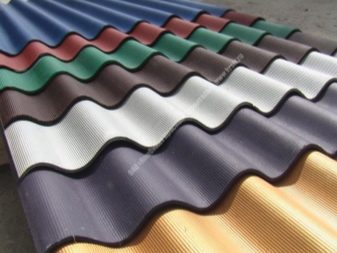
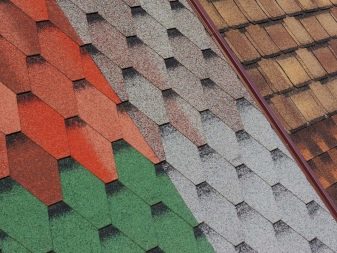
Design
The choice of design for the gazebo is influenced by personal preferences, the style of landscape design and the decoration of the country house. It should match in style either with the decoration of the garden, or with the decoration of the house, or become a unifying element of the composition.
Summer gazebo can be combined with a gardenwhen the site is small and it is used as an element of space zoning. In this case, it makes sense to turn to semi-closed versions of the gazebo, equip a living wall on one of its walls, or let climbing plants along the roof. Thus, it will be possible to combine it visually with the green massif and make it so that the garden is not viewed from one point entirely, and this is one of the main methods of increasing space through landscape design.
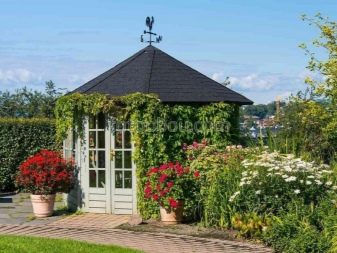
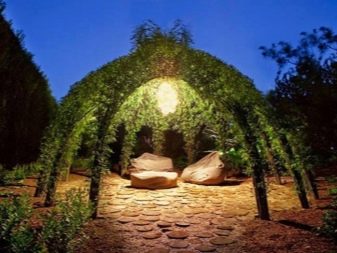
Another option for decorating a gazebo in a small area is the use of glass and transparent or green polycarbonate for the roof and walls of the gazebo. The green material will merge with the living mass, and the transparent material, on the contrary, will create the effect of airiness and allow you to see what is on the other side of the gazebo. It is practical, inexpensive and convenient, since it is easy to bend or cut out parts from polycarbonate and make the most unusual gazebos.
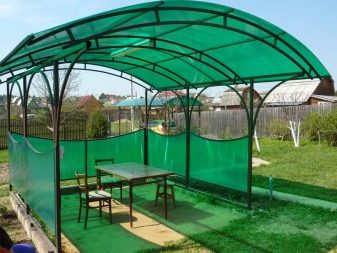

It is important not to overdo it when decorating the gazebo. If the garden is made in a regular style (classic, strictness, strict symmetry, mirror arrangement of plantings along the central path, green color advantage, shorn bushes and other elements typical of city parks), then the gazebo should be as simple and clear as possible. We make the color of the finish to match the dominant color in the landscape.
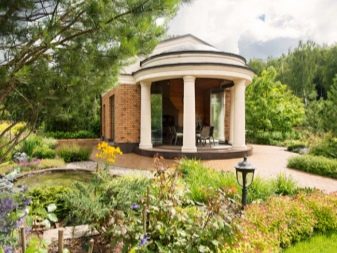
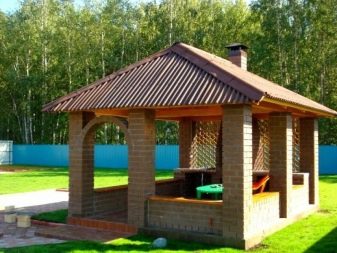
To decorate the garden in a more picturesque style, you need a suitable gazebo. The landscape style encourages the use of raw wood and soft shingles for the roof. In the French style, white, lavender or lilac color should prevail (for example, paints for gazebos and roofs), small decorative elements in the form of lanterns. The place will have to use an old bicycle as a flower bed next to the gazebo.
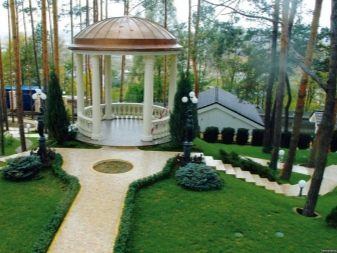

Eastern styles tend to be simple. Here you can use elements of Asian culture, shojo doors, the appropriate shape and finish of the gazebo roof (red tiles, multi-level roofing).
Country, Provence, Chalet, Russian and Rustic styles are simple and straightforward designs based on practicality and available materials. Log gazebos, thatched roofs, a barbecue fireplace, hemp instead of chairs, wicker baskets and decor will be appropriate here.
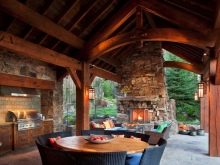

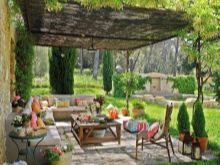
Interior
Interior design ideas are also based on the style of the garden or the decoration of the house, only inside the gazebo it is simplified.
Of the required elements - seating. These can be benches around the perimeter of the gazebo or chairs. Chairs are comfortable in that they can be moved, and benches are easier to create with your own hands.
These are stools from home, which received a second life as a result of alteration, and practical plastic furniture, and wicker rocking chairs, and chairs from boxes, and hemp stools, and constructions from boards and pallets, and everything that has enough imagination and skill.
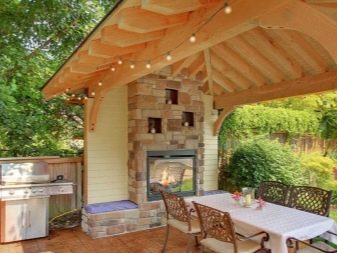
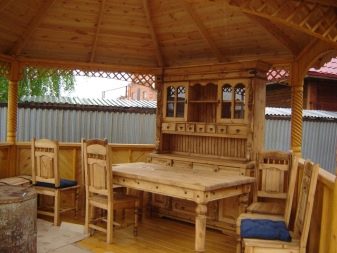
To make the furniture comfortable for long gatherings, it can be equipped with soft foam pillows in dense covers. Elongated pillows made of these materials also fit perfectly on the benches. Inside benches and chairs made of boards, it is convenient to organize drawers for the little things you need in the gazebo: disposable dishes, napkins, matches, skewers, firewood, and more.
Do not forget about things that create comfort: candles, blankets, textile curtains, wicker or carved lanterns, garlands will be very useful. You can use Chinese breeze bells, dream catchers, or curtains to decorate the gazebo.
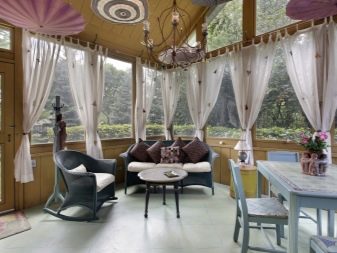
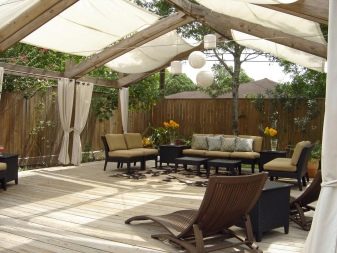
Construction
A step-by-step guide to how to build a good gazebo with your own hands does not need to be looked for in special literature. The main thing is to perform actions in stages, without neglecting the rules, in order to speed up the process.
A simple option is to buy a prefabricated gazebo. Their production is quite developed today, and each product comes with assembly instructions and fasteners. It is not necessary to fill the foundation under it, and you can assemble the structure yourself in a day.
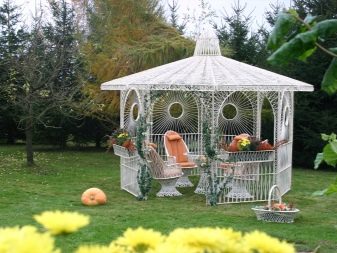
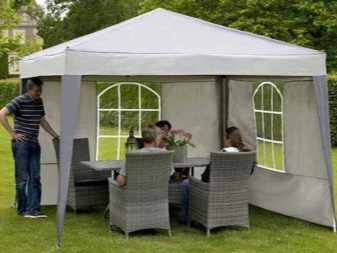
A homemade gazebo will take longer, but it will also last longer.
The first stage of construction is making the foundation. The monolithic jellied base is versatile. To do it, you need to dig a recess in the ground for several tens of centimeters in the shape of the gazebo, fill the bottom with sand, line it with large stones with an even upper edge, leaving gaps between the fragments, and fill it with cement mortar. Wait 3-4 weeks until completely dry, then install the gazebo on top.
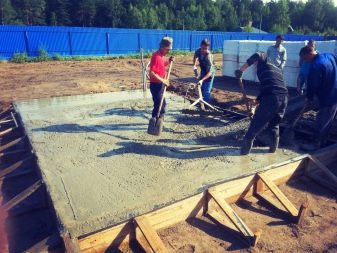
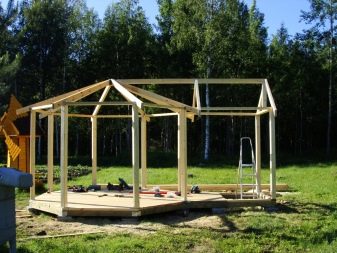
The second stage is the fabrication of the frame. For each type of gazebo, the process is individual.
The third stage is the construction of the roof. Its installation depends on the shape and materials, which are described just above.
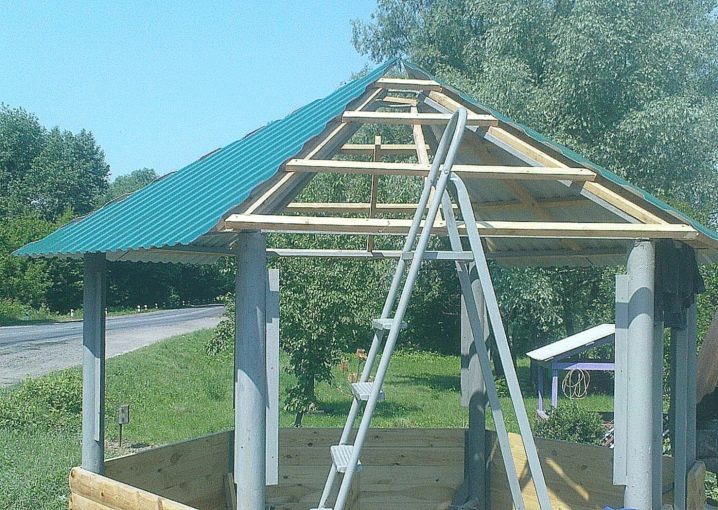
Advice
- The gazebo should be erected in dry and warm weather.
- The site under the building needs to be strengthened for almost all types of buildings.
- Furniture in an open gazebo is best used from plastic. At the end of the summer cottage season, it must be brought into the house for storage.
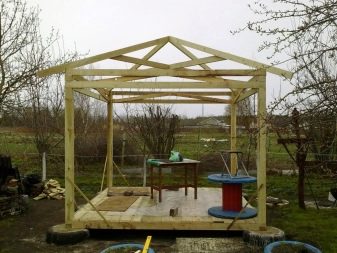
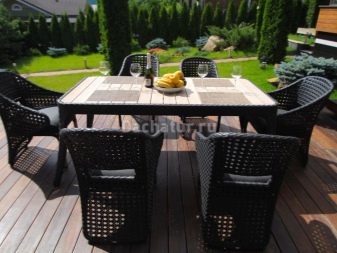
- Budget building materials must be chosen with care. Sometimes for the construction of an economy class building it is better to use materials at hand than to build, for example, from used bricks using low quality cement.
- The gazebo is exposed to weather conditions, so materials must be selected that are resistant to changeable weather conditions and additionally protected. Wood needs antibacterial impregnation, and iron needs corrosion protection.
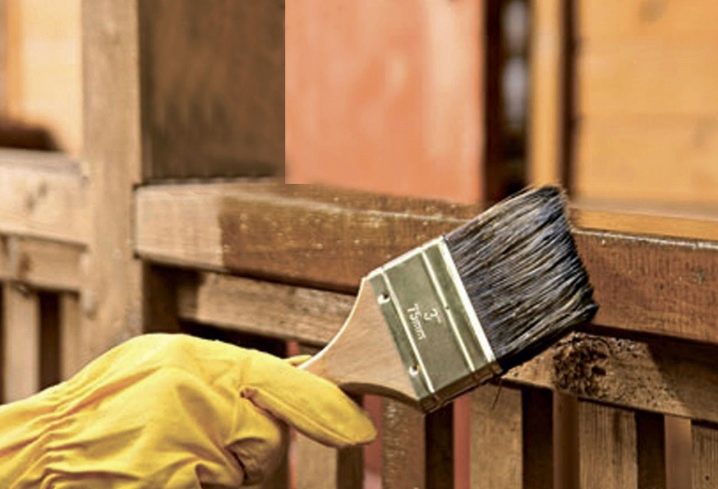
Beautiful examples
The decor of the gazebos is as diverse as the summer cottages themselves. You can make it using simple techniques. For example, use a non-trivial form. The hexagonal structure of the gazebo and the roof in the oriental manner will make the gazebo a highlight of landscape design.
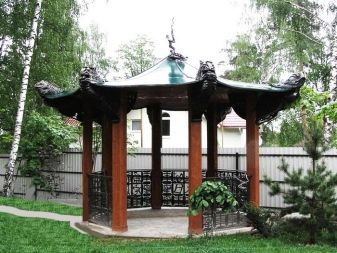
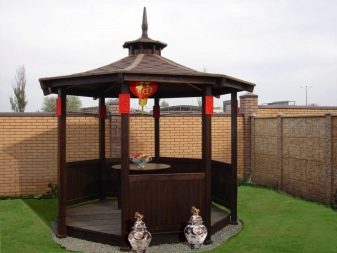
The way the walls are decorated plays an important role. Summer gazebos look great in the green of climbing garden plants. You can always protect yourself from the wind in an open building with the help of thick textile curtains. It is beautiful, practical and very cozy.
Internal content is also important. Interesting furniture, decorative items, blankets and small pillows create a romantic and comfortable atmosphere. And the presence of a fireplace in a spacious gazebo increases its functional and aesthetic qualities.
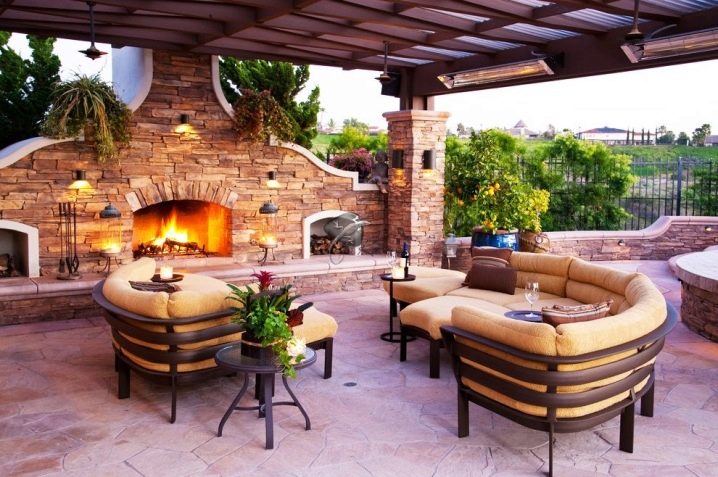
How to build a gazebo, see the next video.





























































The comment was sent successfully.